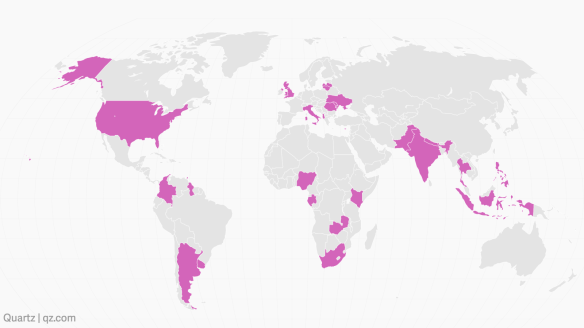Episode 2: The Undoing
Last week we saw how the data was leaked and that it was used by SCL and Cambridge Analytica to further their agenda in political circles. Today we will see how the data helps in streamlining campaign planning, the various political impacts CA and SCL had in elections and campaigns; and why Christopher Wylie decided to be the whistle-blower.

How the data is used by CA and SCL?
Now that we know SCL and CA used personal data for over 50 million users, it is also imperative that we understand how that data was used. SCL and CA are companies that pride themselves on successful political campaigns and elections. To be successful in either, it is necessary that you reach out to the most number of people possible. That can be achieved by knowing where your potential votes are coming from – which will in turn give you a better feedback about where to conduct your rallies, what issues to talk about which will resonate the most with people, etc.
So the data collected helps in profiling people (the usual way viz. browser history, location and such others), but also provides the further incentive of finding out the more intimate details through psychological profiling. And this is creepy because once someone knows your profile, it’ll be easier to predict how a person would react to a piece of information.
For instance, imagine you are going out on a date with someone for the first time. To ensure the date goes smoothly, you try to learn something about them – so you check their social media accounts to have a general idea about what they like and dislike. If they have made it clear through photos, videos and posts about how they love Italian food and animated movies, you would probably try to incorporate these items in your date to impress them.
Except that you are Cambridge Analytica, you not only have access to their posts, but also their log in timings, their psychological profile – whether they are open to new activities, their emotional states, etc. AND you also have a software that would predict their next actions to about 75% accuracy. Sounds creepy? That’s because it is.
And this is how SCL and CA have been using your data. They use your data to predict how best to influence you to do their bidding (or in this case, vote for their client). This is done through targeted ads. And these have been very successful campaigns.
Quartz has mapped the global reach of SCL and CA and they have made their presence known in almost all continents (the author discounts taking into account Antarctica as the penguins care more about the melting ice than who will be the next ruler). It writes:
So far, the focus has been on CA’s impact in the US and UK, but SCL Elections claims to have a far larger footprint. According to company documents issued around 2013, which were reviewed by Quartz, SCL has worked in 32 countries across Europe, North and South America, Asia, Africa, and the Caribbean.
Countries where SCL Elections claims to have worked
- US
- UK
- Argentina
- Colombia
- Guyana
- Uruguay
- Trinidad and Tobago
- Grenada
- St Vincent and the Grenadines
- Saint Lucia
- St Kitts & Nevis
- Antigua and Barbuda
- Cyprus
- Nigeria
- Gabon
- Kenya
- Zambia
- South Africa
- Latvia
- Lithuania
- Ukraine
- Romania
- Italy
- Moldova
- Albania
- India
- Pakistan
- Nepal
- Thailand
- Indonesia
- Philippines
- Mauritius
Since no confirmed presence is admitted by SCL and CA, many instances of electoral sabotage go unnoticed. African and Asian continent seem to also be dragged into what was initially thought to be a scandal reserved for US and UK. Even Brexit has come under the scanner with the involvement of CA in the Vote Leave propaganda.
Why has it come to light now?

AFP/GETTY IMAGES
All of these facts came into light when the pink-haired, young former Director of Research at Cambridge Analytica went on record to The Guardian about the role Cambridge Analytica has played in influencing campaigns. Wylie describes himself as:
“the gay Canadian vegan who somehow ended up creating Steve Bannon’s psychological warfare mindfuck tool”
He was hired by Alexander Nix and was responsible for the research on the psychological aspects of data collection and information usage. And he agreed to give evidence of their involvement in this cyber warfare for elections to the UK Lawmakers. He appeared before the Digital, Culture, Media and Sport Committee of the British Parliament, and provided relevant documents.
If CA and SCL are the culprits, why blame Facebook?
Since most of the mishandling and misuse of data was done by CA and SCL and its subsidiaries, it is confusing as to why Facebook seems to also be getting the flak for this. Facebook’s official statement is that there was no breach of data, instead, there was “an unauthorised use of data” by Cambridge Analytica.
But Facebook knew about the misuse of information by Kogan by passing the data on to CA, way back in 2015. But it did not take any strong, strict and preventative steps against CA. Instead, it only sent a letter to CA, suspended Kogan’s app. Users were not alerted about the policy violations, and neither was any substantial step taken to secure the information of the 50 million users. Wylie states, “Facebook made zero effort to get the data back.” Moreover, when Wylie was blowing the cover on CA, he got blocked by Facebook.
So, even though Facebook was not directly behind the misuse of data, it is certainly complicit due to its lax security measures and steps when it comes to data protection and limited usage.
In the last part of the series, watch out for the following aspects to this fiasco!
- Which governments are taking action against Facebook, CA and SCL?
- How CA and SCL feature in Indian Politics?
If you want me to add any other aspect that I have not covered either in Episode 1 or 2, let me know through the comments section!

